fall inside a hole
D-51 Sound Play Set (1992)
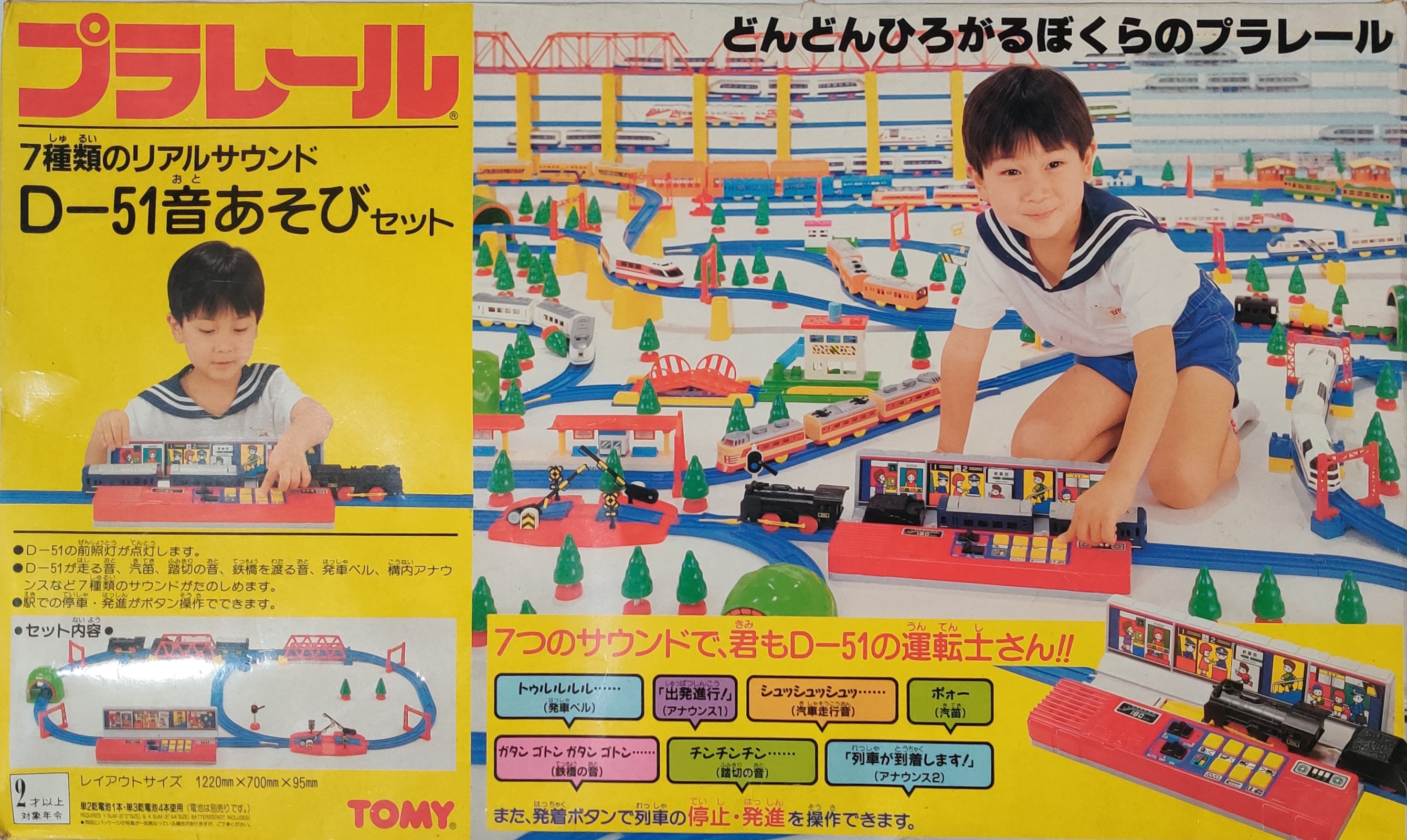
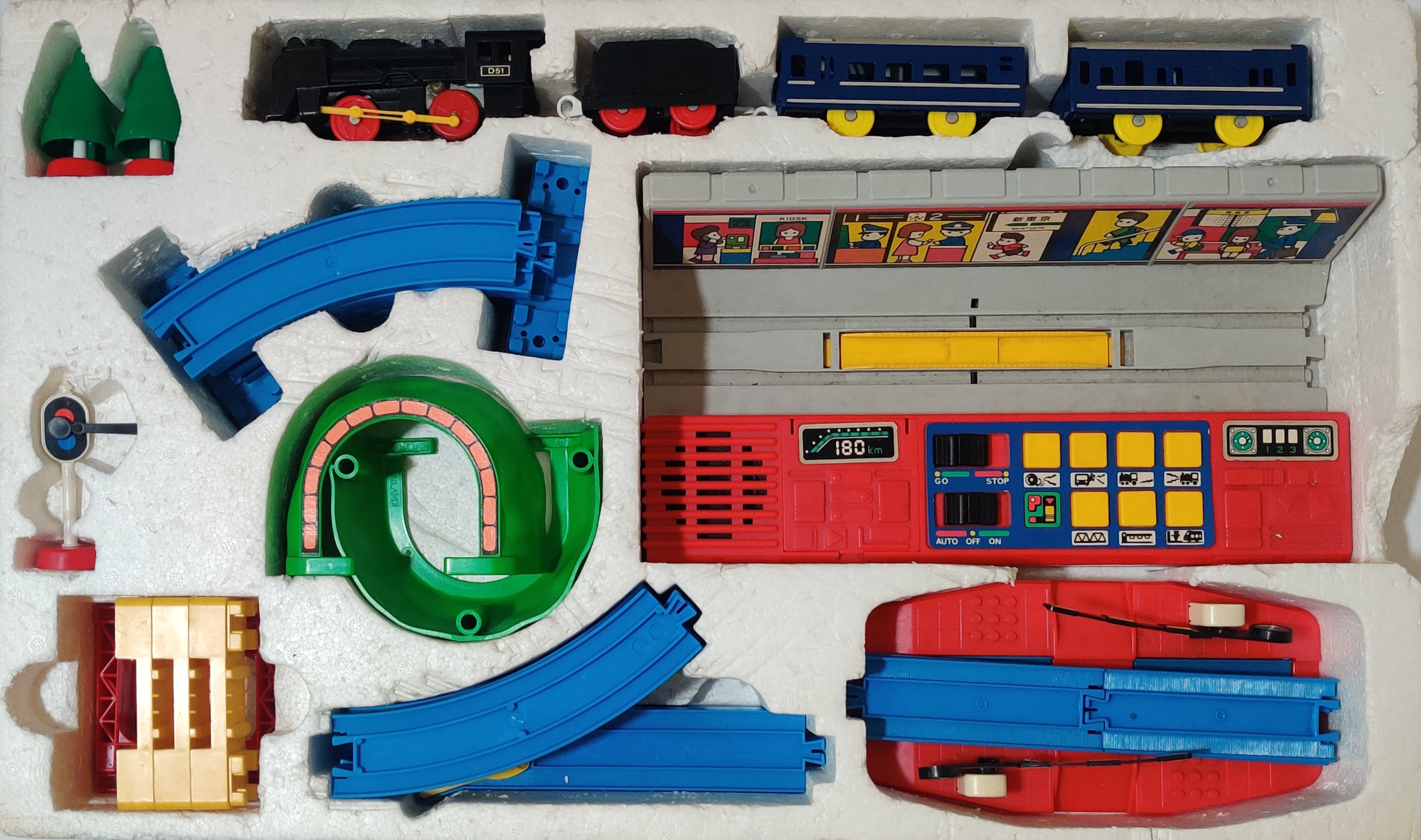
The 7 Types of Real Sound D-51 Sound Play Set (7種類のリアルサウンド D-51音あそびセット) was released in 1992 and features a large set-exclusive electronic station which makes station and train noises and a variety of other common accessories. A made in Thailand rim drive D51 with working headlight leads the standard "blue train" 24 series cars from the time as well as a somewhat uncommon older D51 tender. The set includes a standard Plarail signal and two trees, four overhead wire catenaries, a period red railway crossing, and two iron bridges with mini pier supports. The layout is similar to the classic passing loop layout but with additional scenery and elevated track sections. The ST number dates the box to 1991.



The promotional layout shown on the front and sides of the box has a nice wall of vertical stacked tracks and bridges and panel stations. Above the photo showing the set contents in the lower left corner of the front of the box are a few of the selling points of the set. They read, approximately:
- D-51's headlight will turn on
- You can enjoy 7 types of sounds such as the sound of the D-51 running, train whistle, railroad crossing, crossing a railway bridge, starting bell, announcements on the premises
- You can stop and start at the station by pressing a button.
| Quantity |
Item |
Photo |
|---|---|---|
| 4 pieces | D51 with light, tender, "blue train" 24 series carriages (intermediate and tail) |

|
| 2 | R-01 Straight Rail |

|
| 4 | R-2 1/2 Straight Rail |
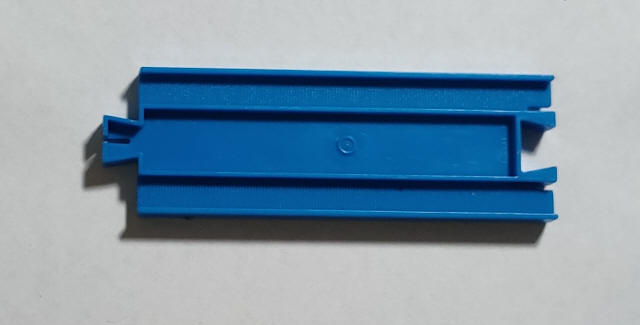
|
| 7 | R-03 Curve Rail |
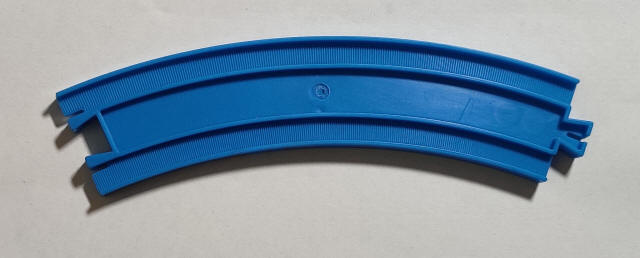
|
| 2 pieces | R-11 Turnout Rail (one pair) |
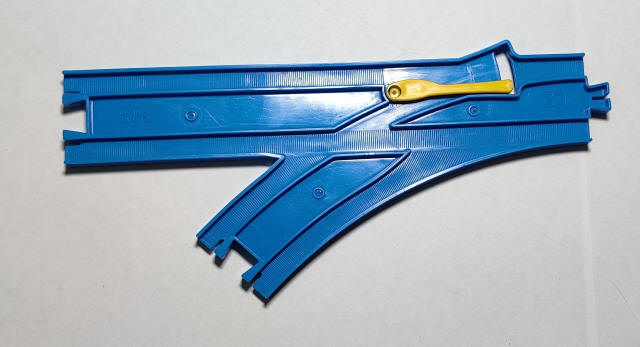
|
| 2 | Sloping Curve Rail "A" |
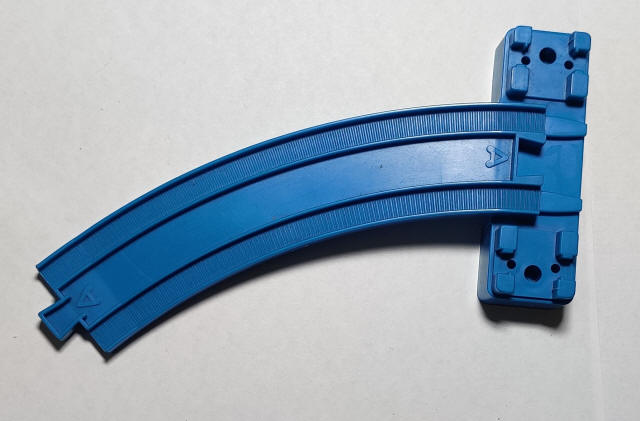 |
| 1 | Sloping Curve Rail "B" |
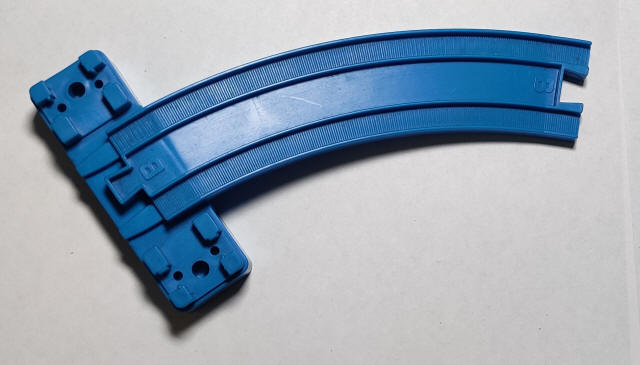
|
| 1 | J-02 Block Tunnel (entrance and exit pieces only) |
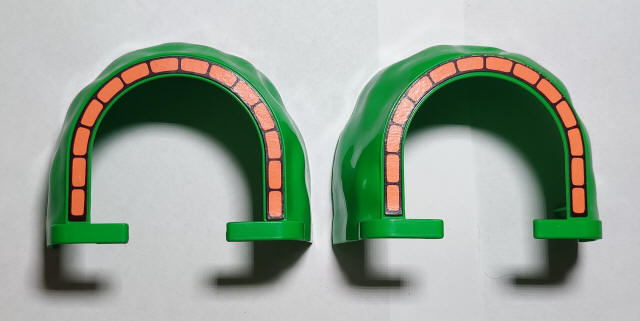
|
| 4 pieces | J-03 Iron Bridge (two pairs of bridge sides) |
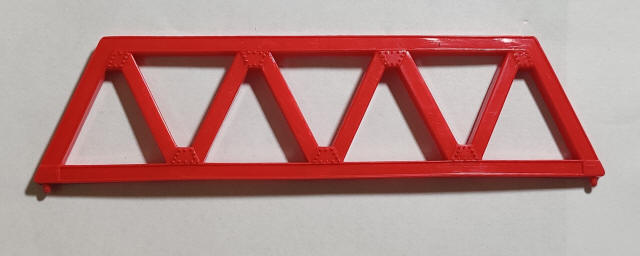
|
| 3 | J-15 Mini Bridge Girder |
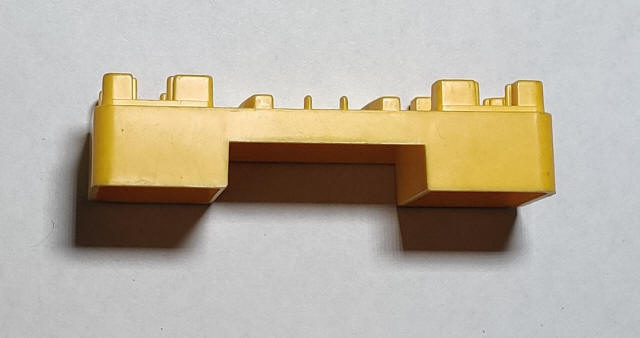
|
| 1 | J-17 New Railroad Crossing |
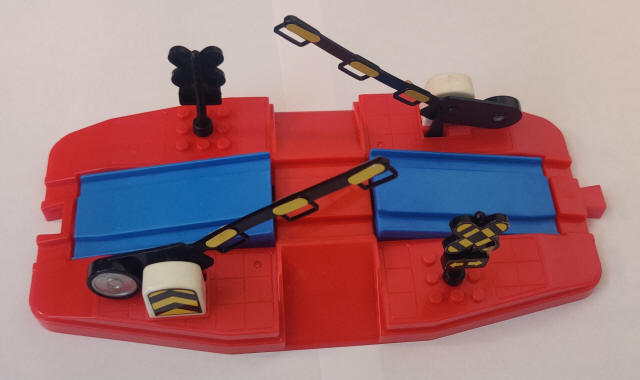
|
| 1 | Sound Station |
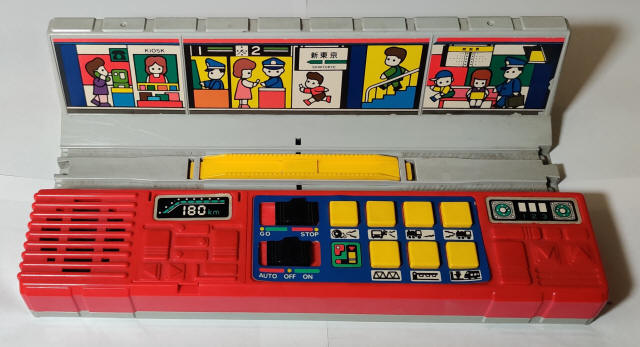
|
| 4 | Catenary |
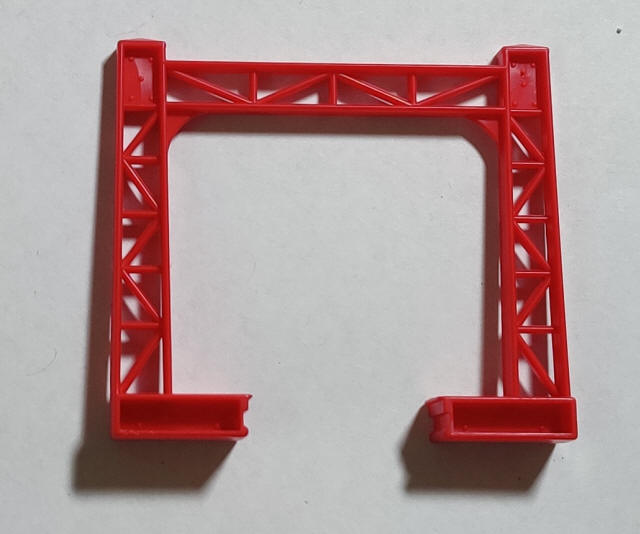
|
| 2 | Standing Tree |
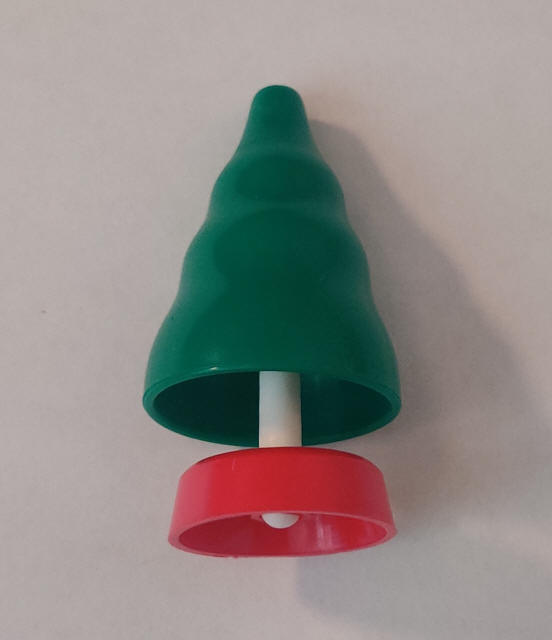
|
| 1 | Signal |
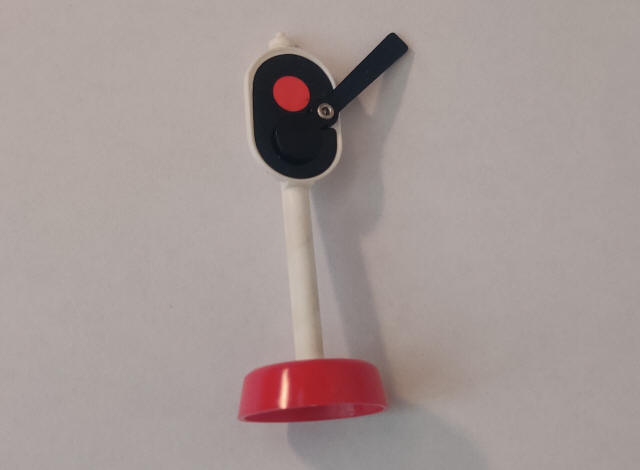
|
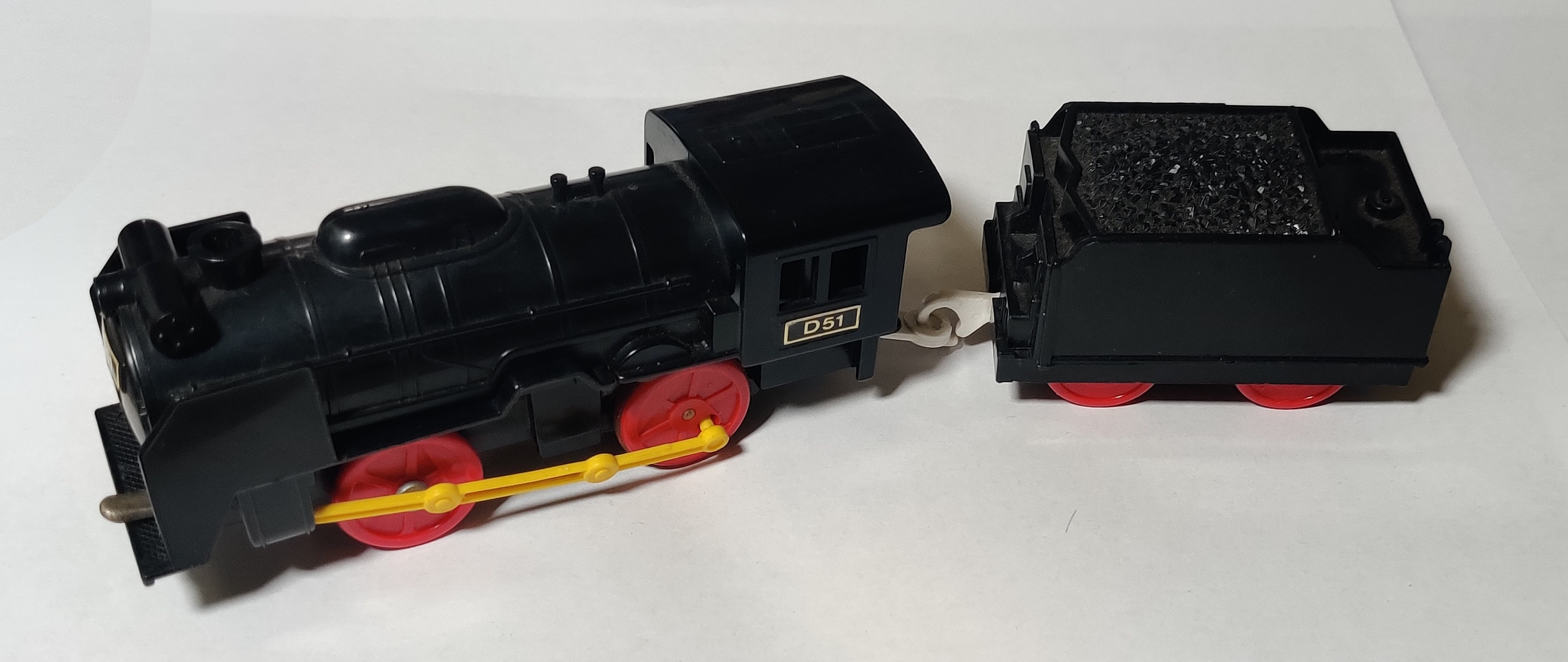
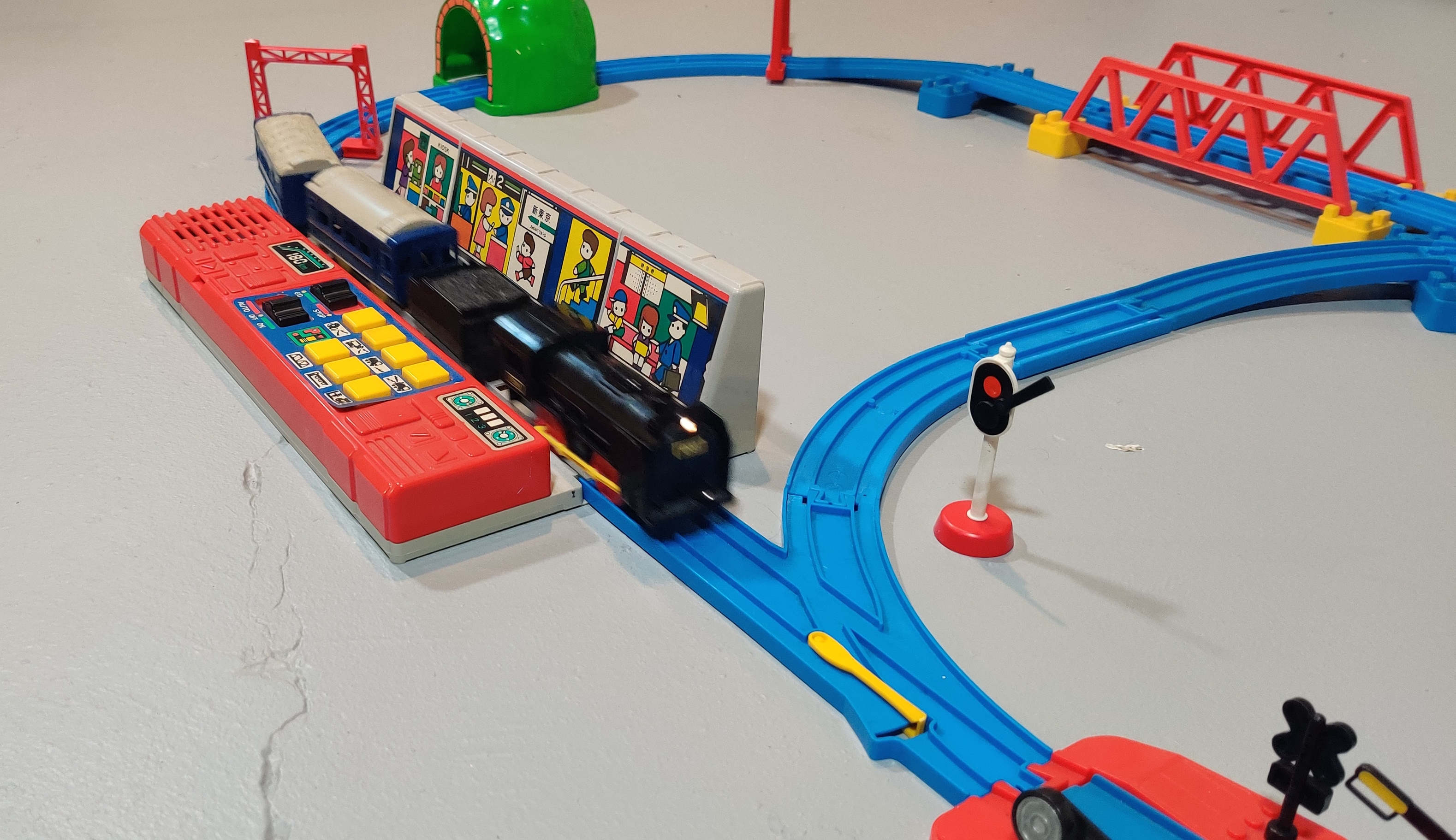
The D51 is both a classic Japanese steam engine and a classic Plarail model. Over 1000 D51 were built between their development in 1935 to the end of their production in the mid 1940s, with a handful of D51s built for export in the very early 1950s. The Plarail D51 was originally introduced in 1970 and was one of the first Plarail trains based on a real class of locomotive. From what I have read, it does not seem that D51 locomotives ever pulled 24 series "blue train" carriages. The D51 in this set is a late Thailand-made D-51 with a light but no clicking noisemaker gearbox. It does not seem any clicking gearboxes were produced in Thailand.
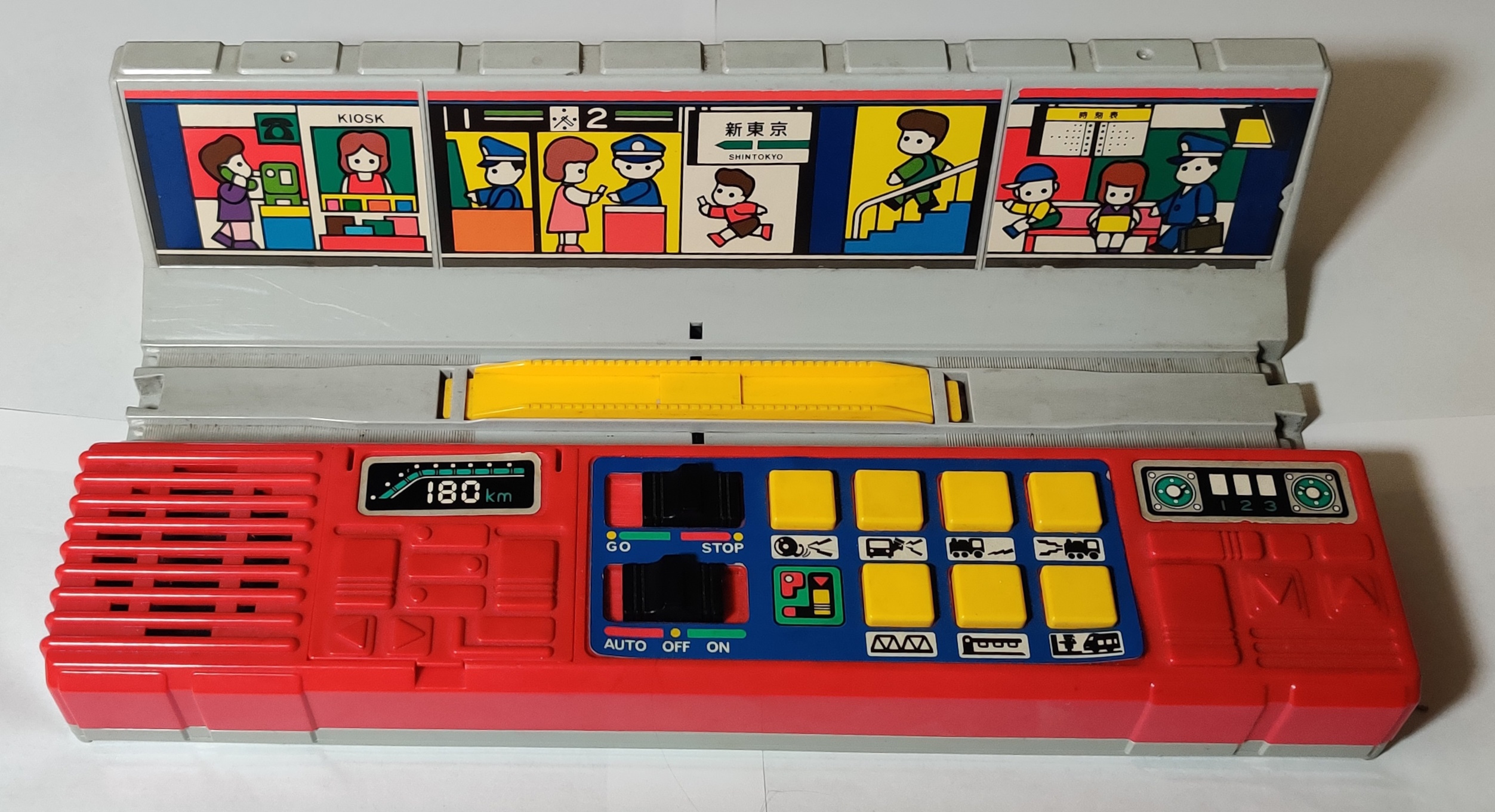
The set includes the exclusive Sound Station, which is an electronic "talking" station with seven sound clips. The graphic on the station wall identify it as "Shin Tokyo" station.

The station base includes a speaker behind a grill, a battery compartment with space for four AA batteries, a switch for the integrated stop rail as well as an on-off-auto switch that turns on the station sounds.
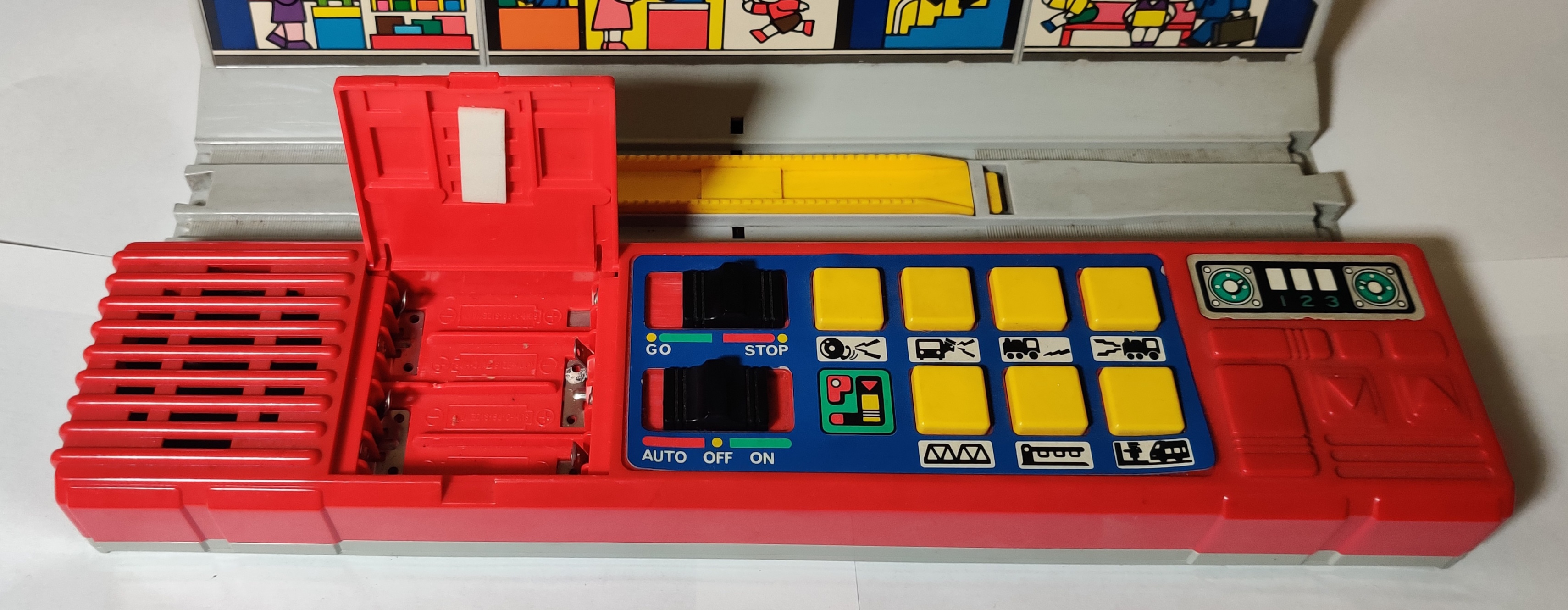
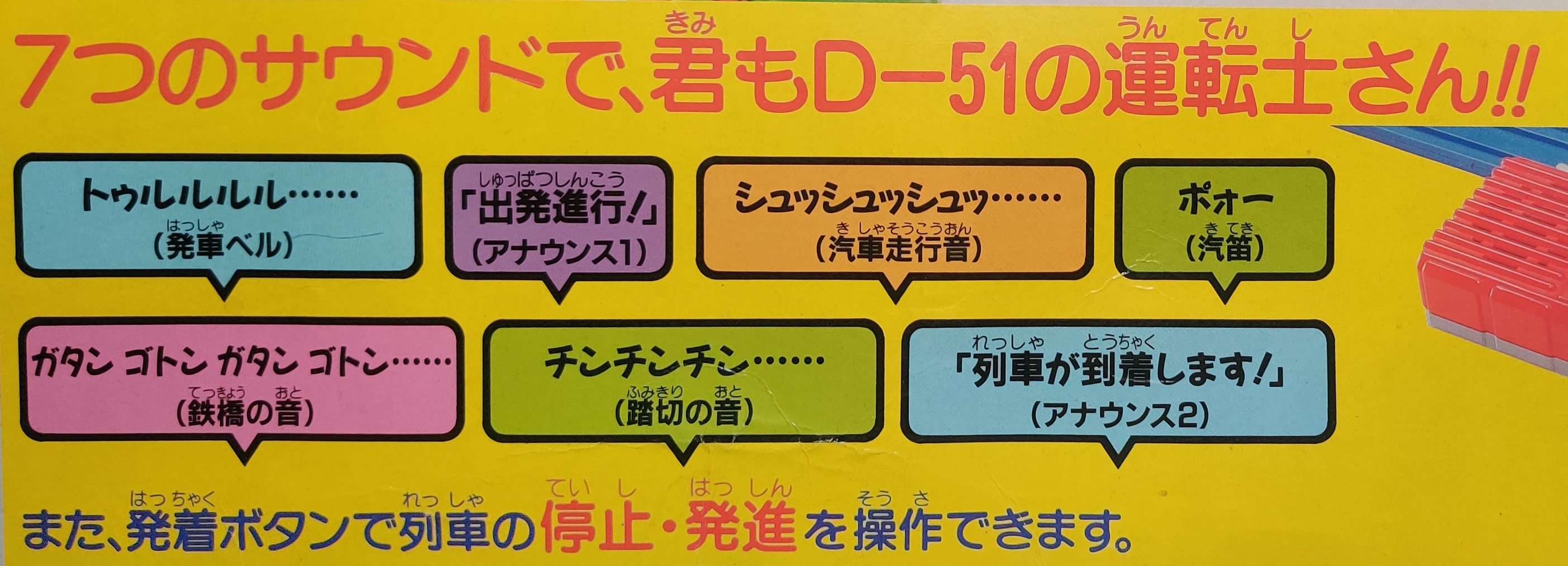
In the upper row, the leftmost button labeled with a bell produces
a
ringing while held down that sounds more like a telephone
than a physical bell being struck as the graphic suggests The box refers
to this as the Trurruluru...-ing of a departure bell. The
next button with a driver hanging out of a subway-style train
plays a sound clip of someone saying "出発進行!" or Shuppatsu
shinkō!, the Japanese for "All aboard!" which the box calls
announcement 1. The third button
with the steam engine and sound trail produces a shushuhsushu... chuffing sound or
train rushing sound
while held down. The last button in the top row plays a steam engine
whistle bwo when pressed.
In the lower row, the button with the bridge symbol plays a click-clack
click-clack sound that the box describes as a gatan-gonton
gatan-goton... which I think works nicely for the sound of a
train running over rail joints as well as the sound of iron bridge
it is supposed to be. The center button with the crossing gate plays
the
chin-chin-chin
sound of a Japanese railroad crossing. The last
button with the person standing by the train plays someone saying
"列車が到着します!" or Ressha ga tōchaku
shimasu! which means "the train is arriving!" which is called
announcement 2.
Setting the station into "AUTO" plays a looping sequence of the station's sounds. A video of the engine running with the station set to auto can be seen here. Of course, you can also play manually by setting the switch to "ON."
The bottom of the station shows part of the stop rail mechanism and that the station was designed in 1991 and manufactured in Thailand.
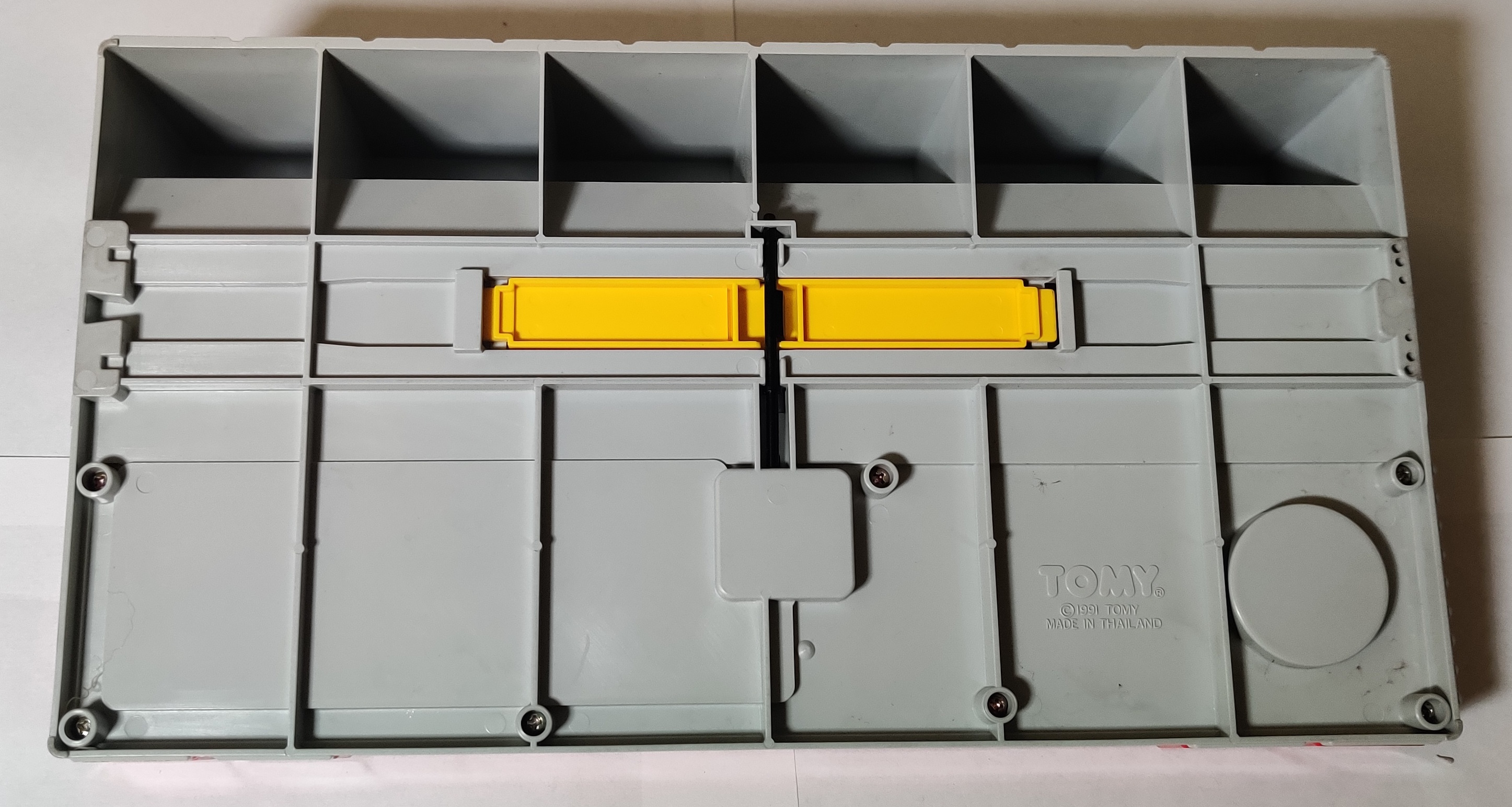
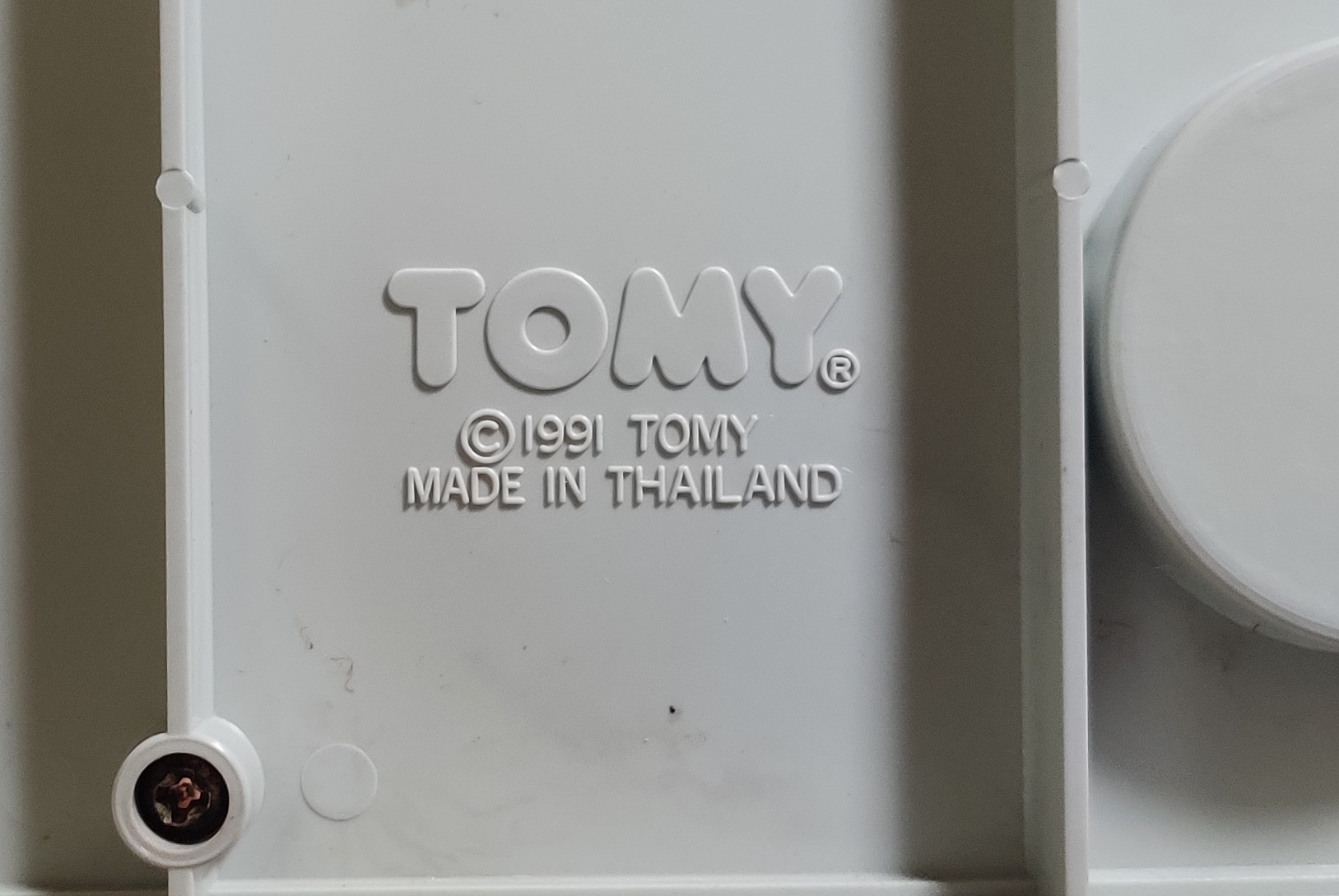
Inside the station is a Sanyo 8 ohm 0.4 watt speaker, the bottom of the battery compartment, and a relatively simple circuit board with the auto-off-on power switch, seven micro switches that the large yellow buttons press on, the control circuitry and audio samples for the talking function, and an amplifier to drive the speaker.


The board is marked Play Sound and was designed and possibly manufactured in Japan unlike the plastic components of the station. The single chip that drives the station is a WR5610103A. There is little information available online about this chip but it must be able to handle storing a modest amount of sound samples as well as handle reading the micro switches and some sort of sequenced program to play the sounds in AUTO mode.
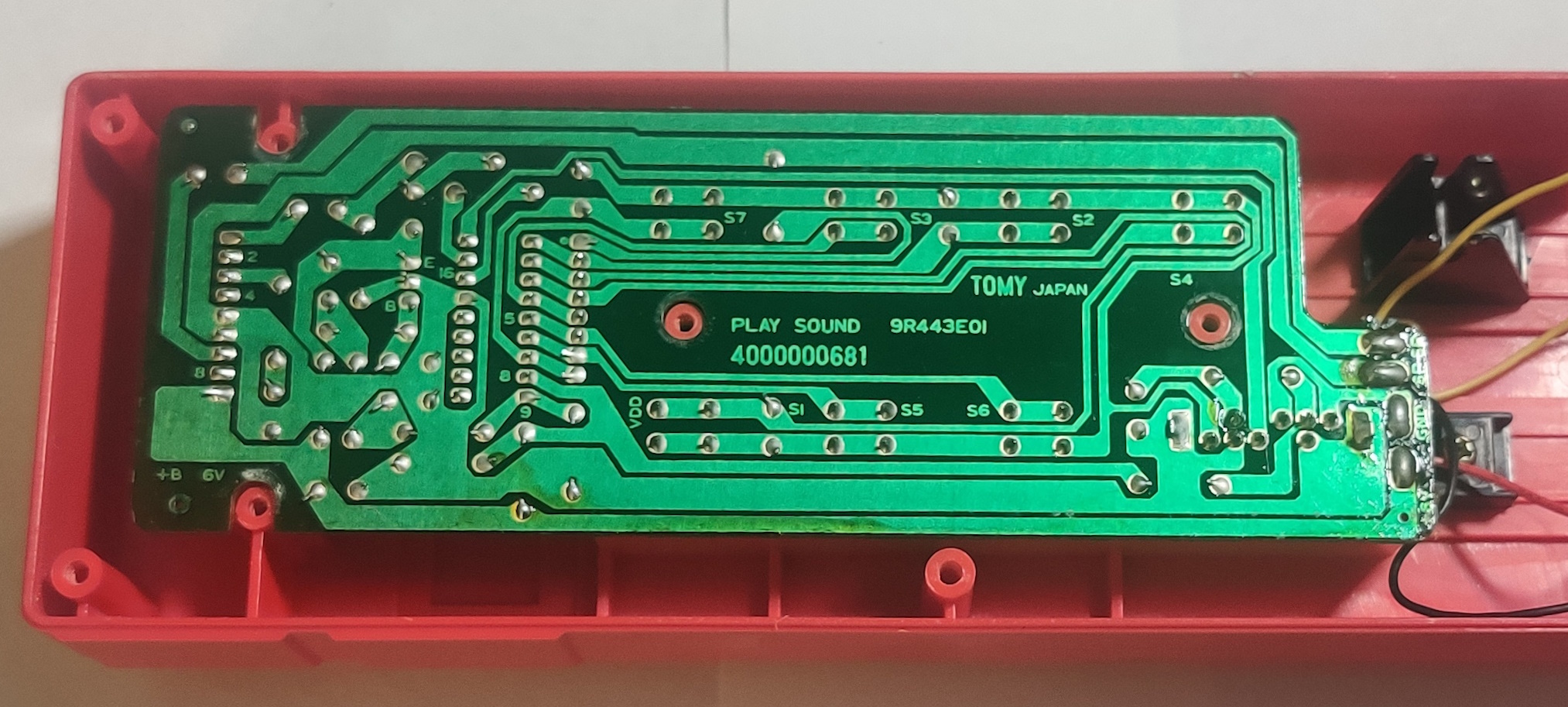
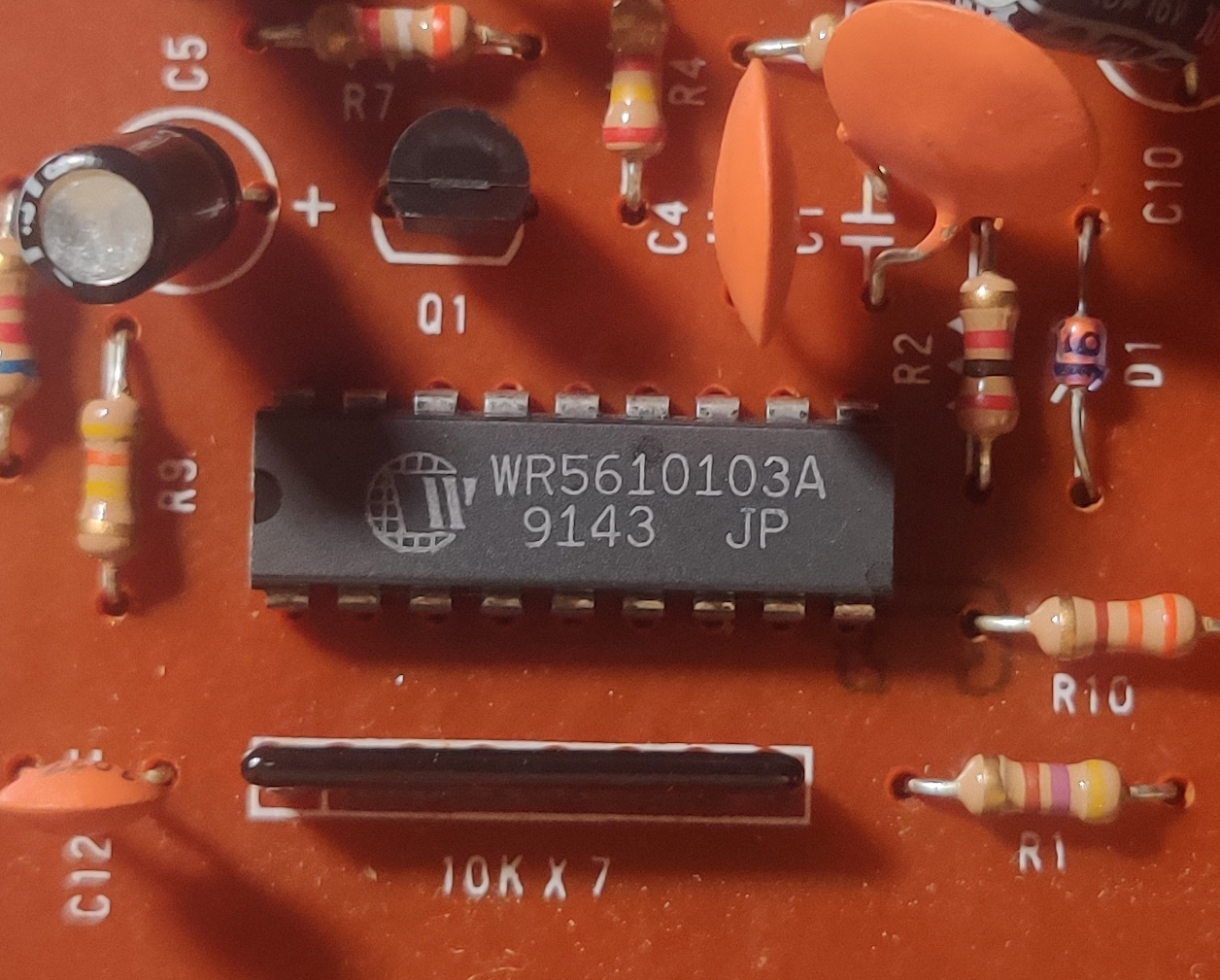
The stop rail switch engages directly with a modified version of the standard stop rail mechanism.
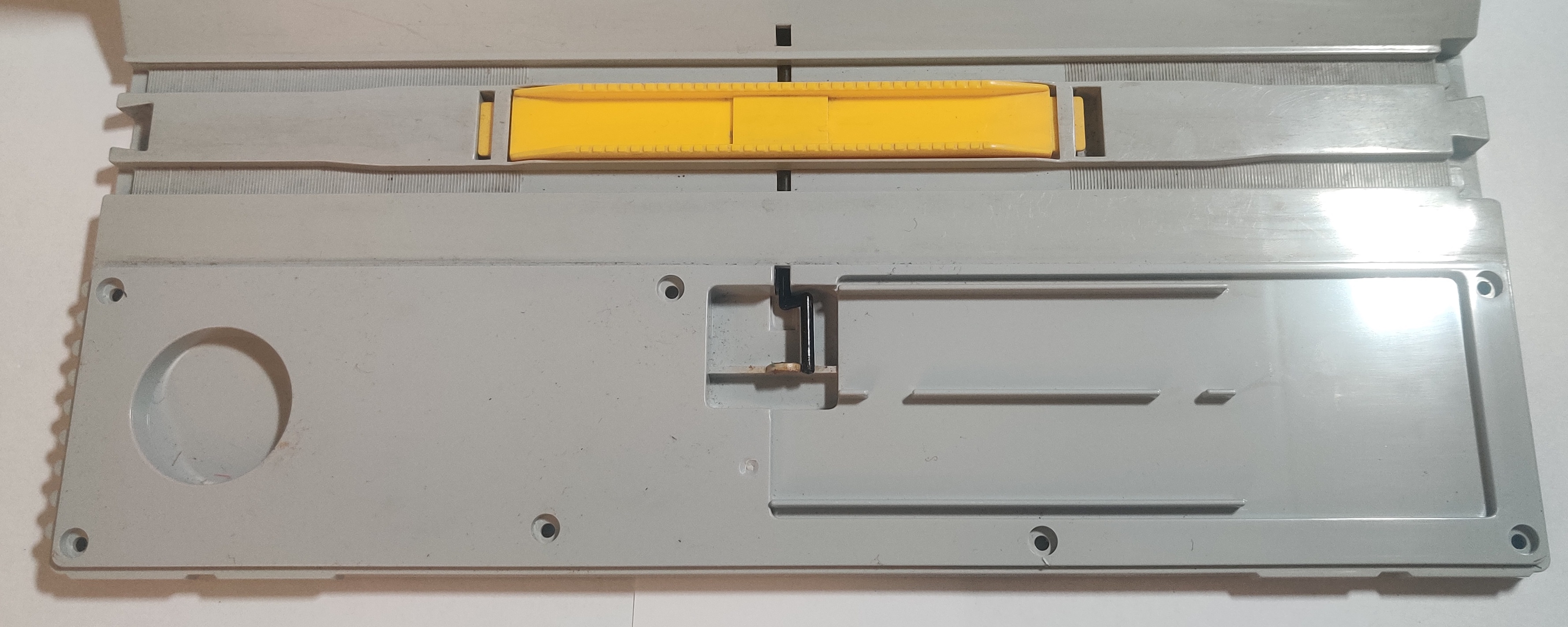
Although never sold individually or elsewhere in Japan, a version of the Sound Station was also released in Europe as part of the Tomy Trains range.
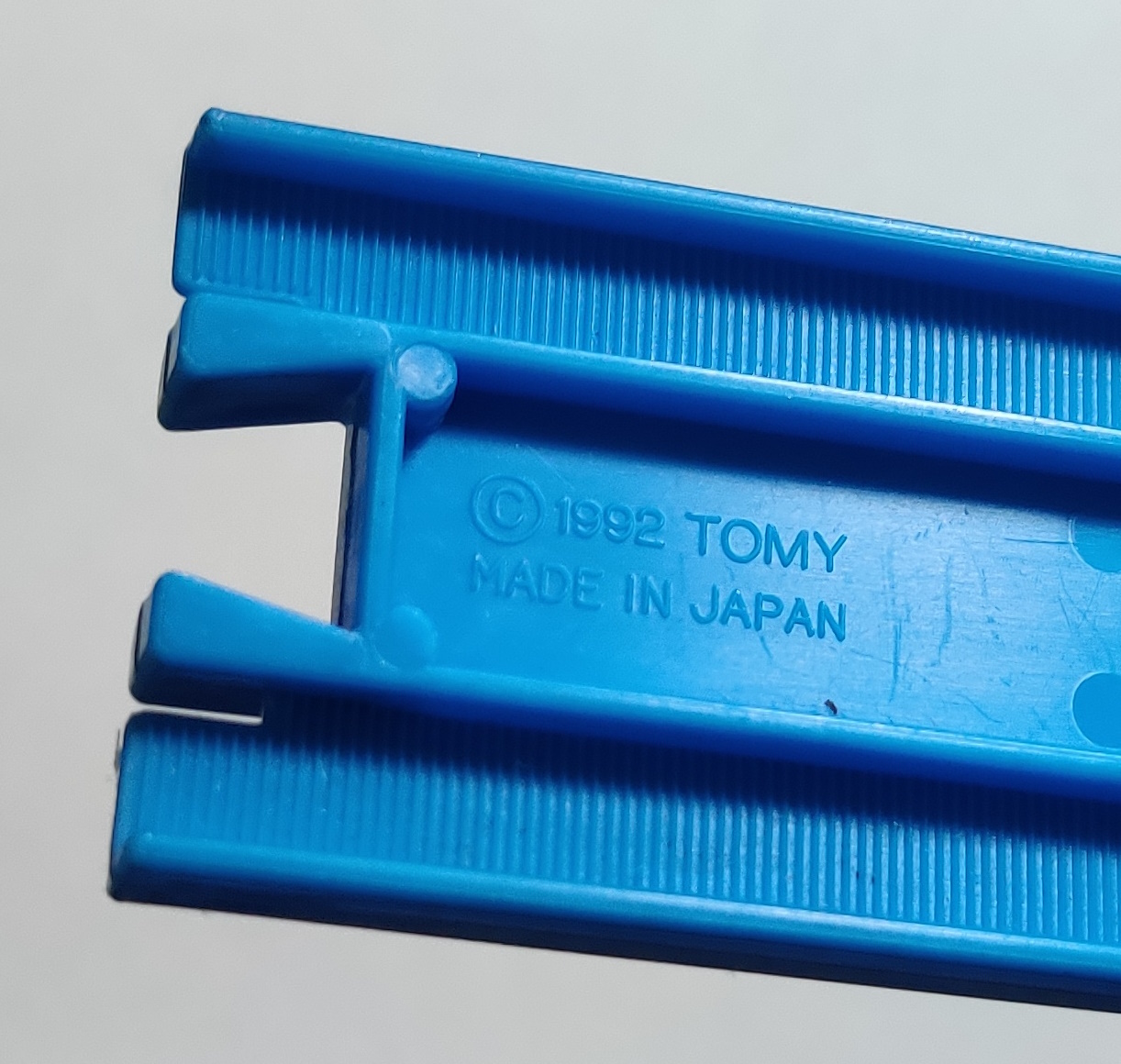
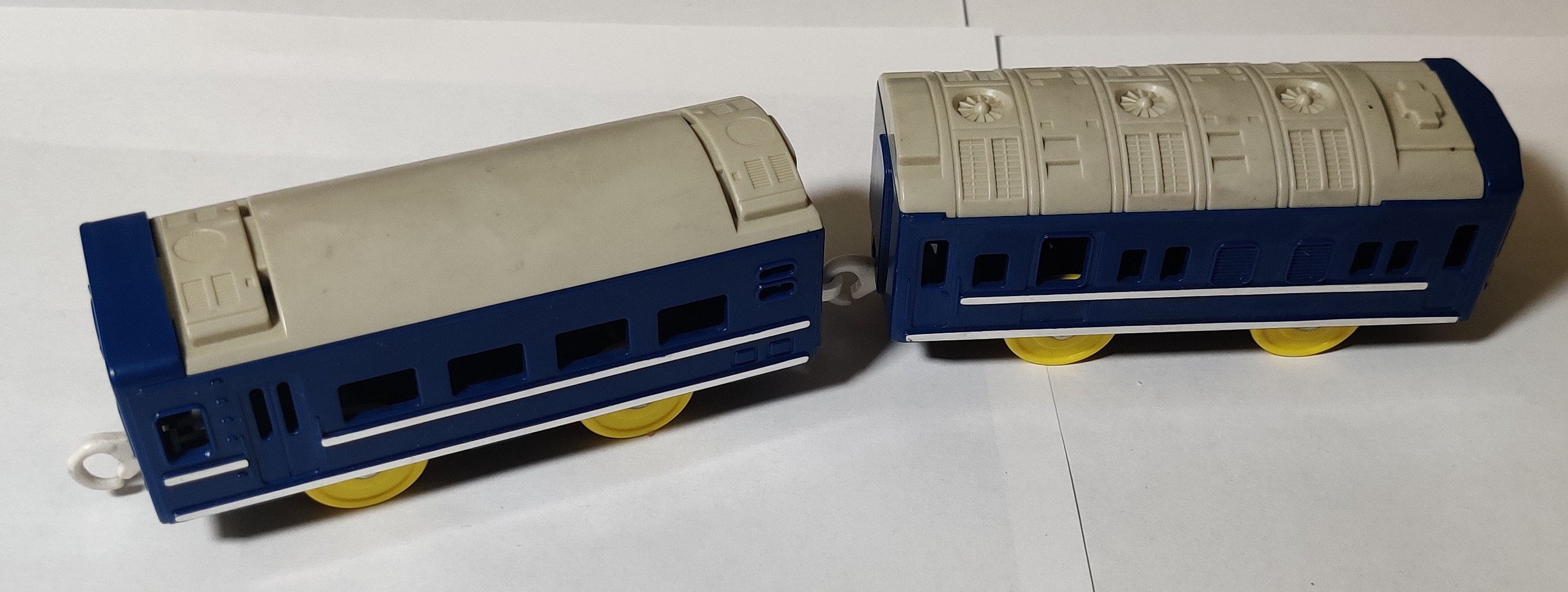
The set includes mostly 1992 mark Japan-made rails with treaded rails. The locomotive and carriages are made in Thailand with an old single-split style coupling on the intermediate series 24 car.
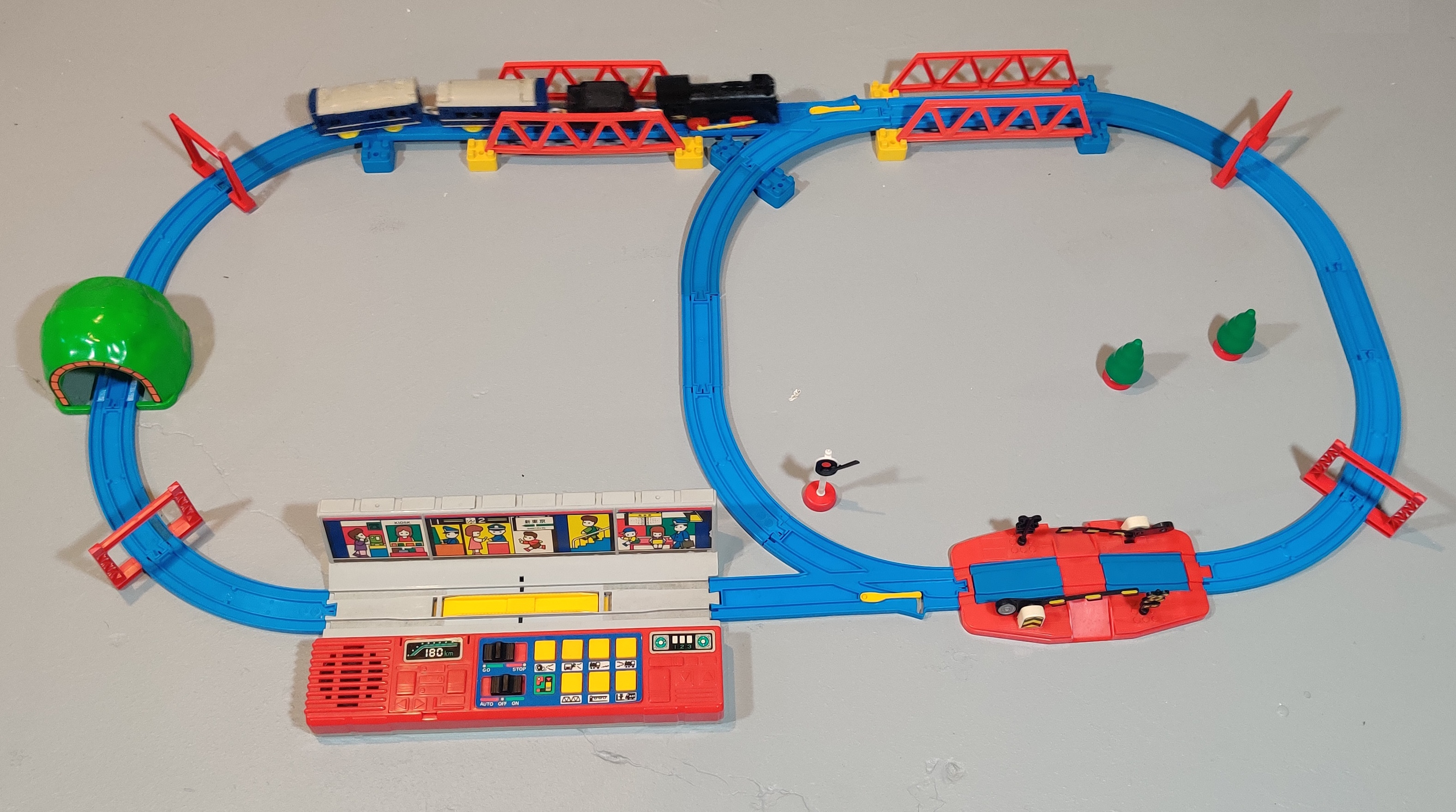
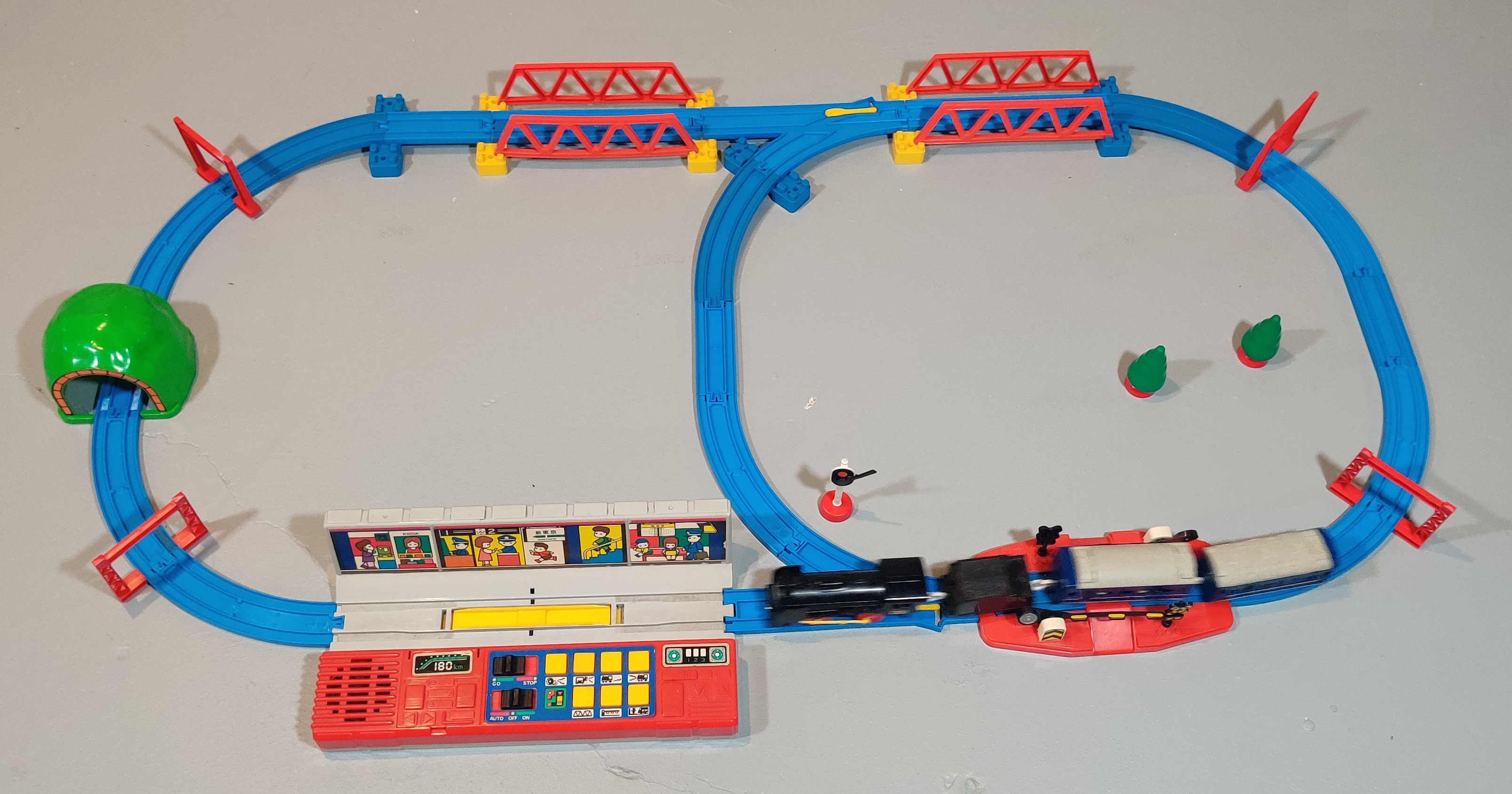
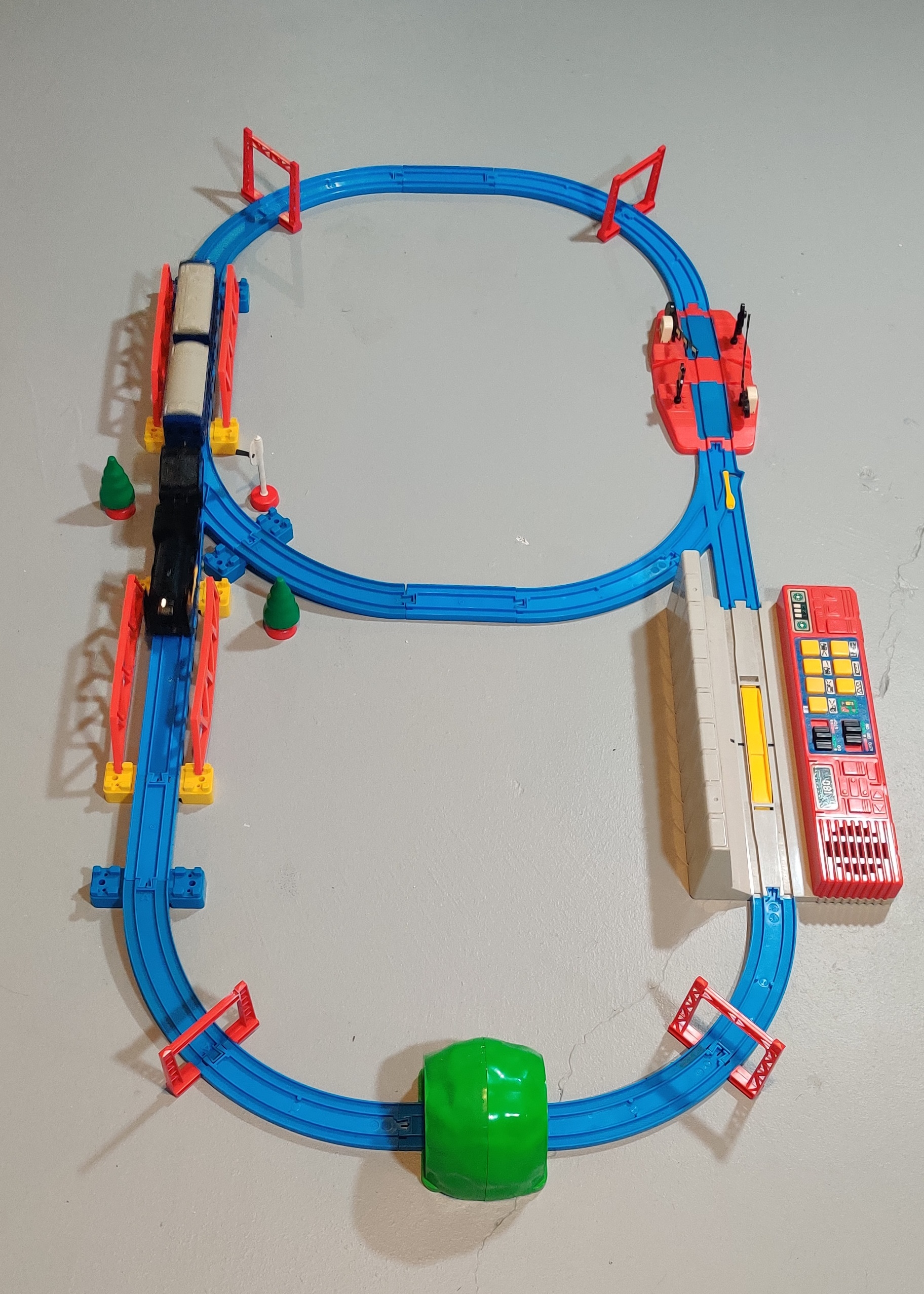
The layout includes the Sound Station and New Railroad Crossing in the bottom portion of the loop with two Iron Bridges elevated on single Mini Block Girders along the back. The track plan is similar to many "basic" sets but is larger and has more accessories and a raised portion of track. I quite like that the rear switch is elevated. As the Plarail Museum puts it, "it's a set from when Japan was cool."
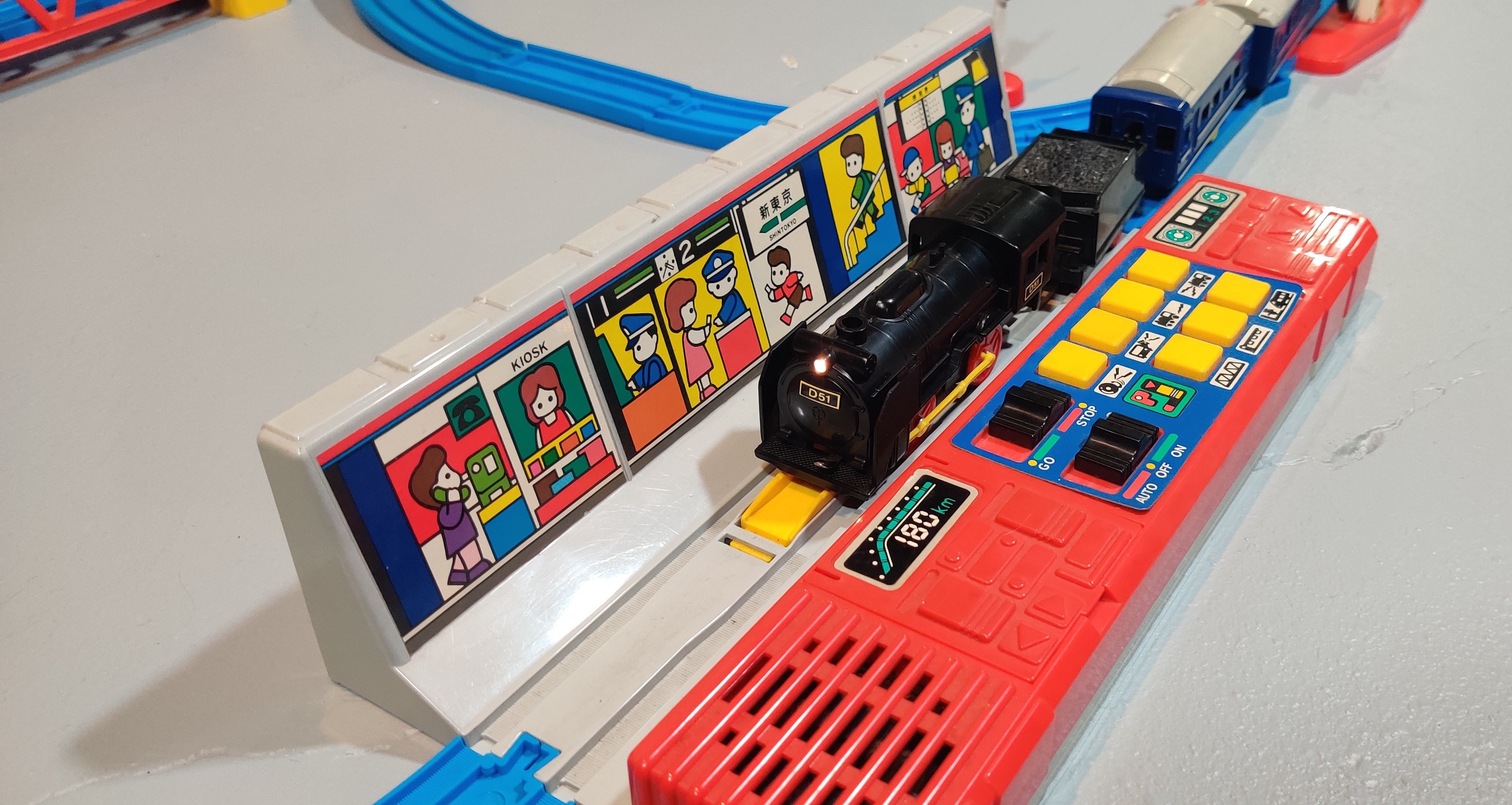
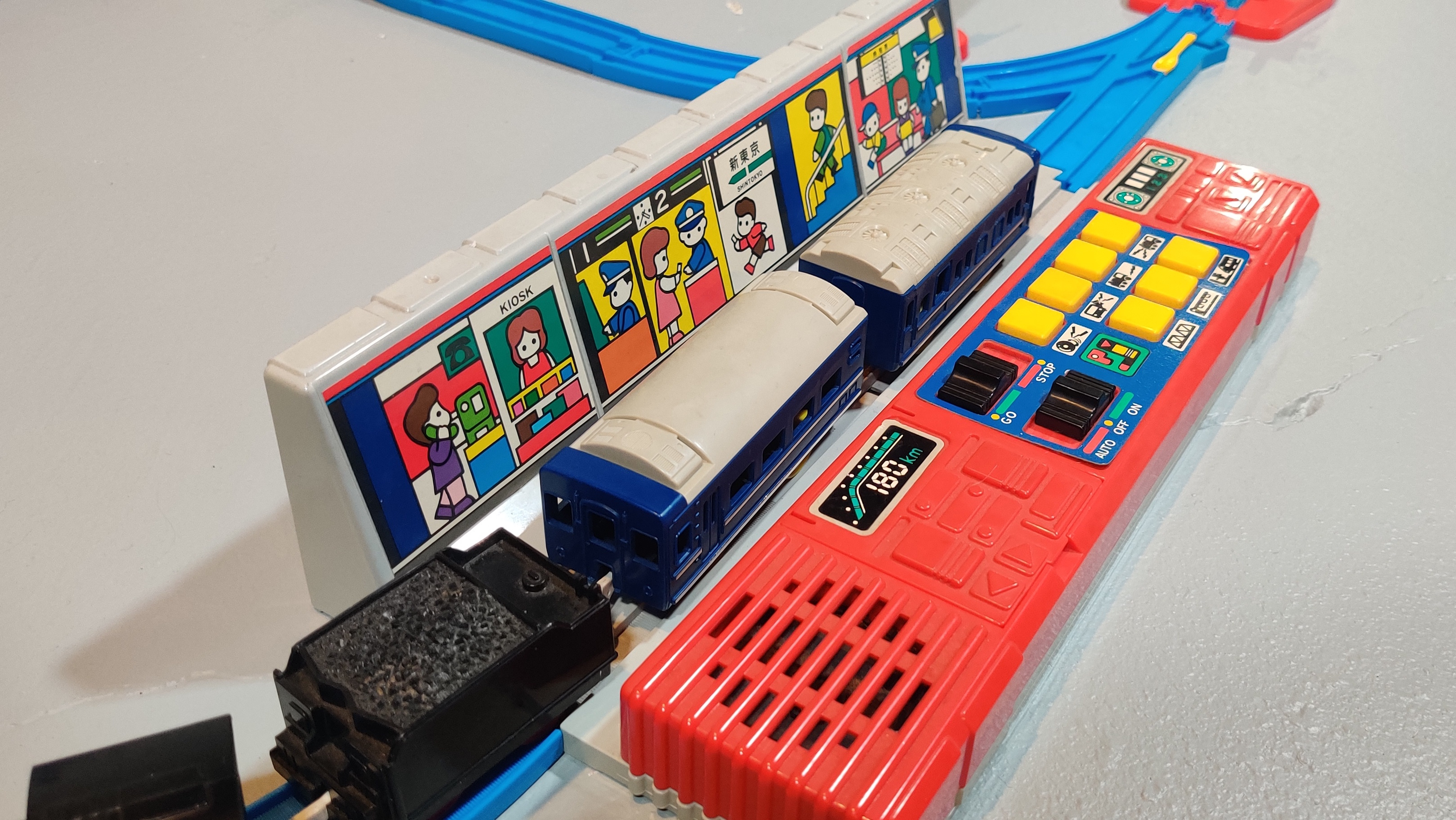
Like pretty much every other station, having the stop rail centered right in front of the platform leaves the engine sitting at the platform and the coaches yet to reach it.
The rim-drive D51 with light in my set was produced in January 1992 and is in need of repairs. Before I purchased the set in 2021, the rim-drive tires were replaced with a clear tubing that is fairly effective but the regular wheel tires have not been replaced and are deteriorated. The front battery contact was also broken off, presumably because of a corroded battery, and was replaced with a tin foil and electrical tape arrangement. I have a spare rim drive D51 with light chassis that is missing the smoke deflectors that I may try to produce one nice working engine from, but the most usable piece on the spare chassis is the front battery contact and I do not yet have a good way to drill out and replace the rivets that hold the contacts in place. For the purposes of demonstrating the set, I used my 1991 D51 with Light engine.
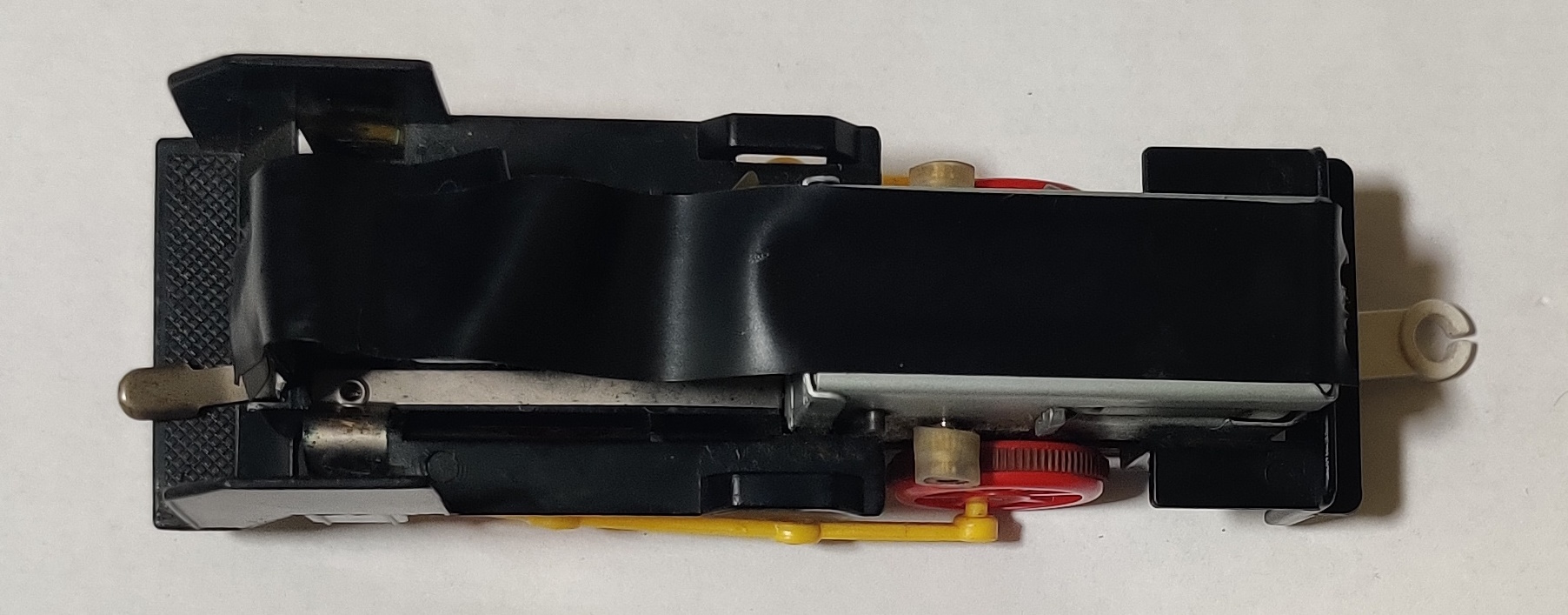
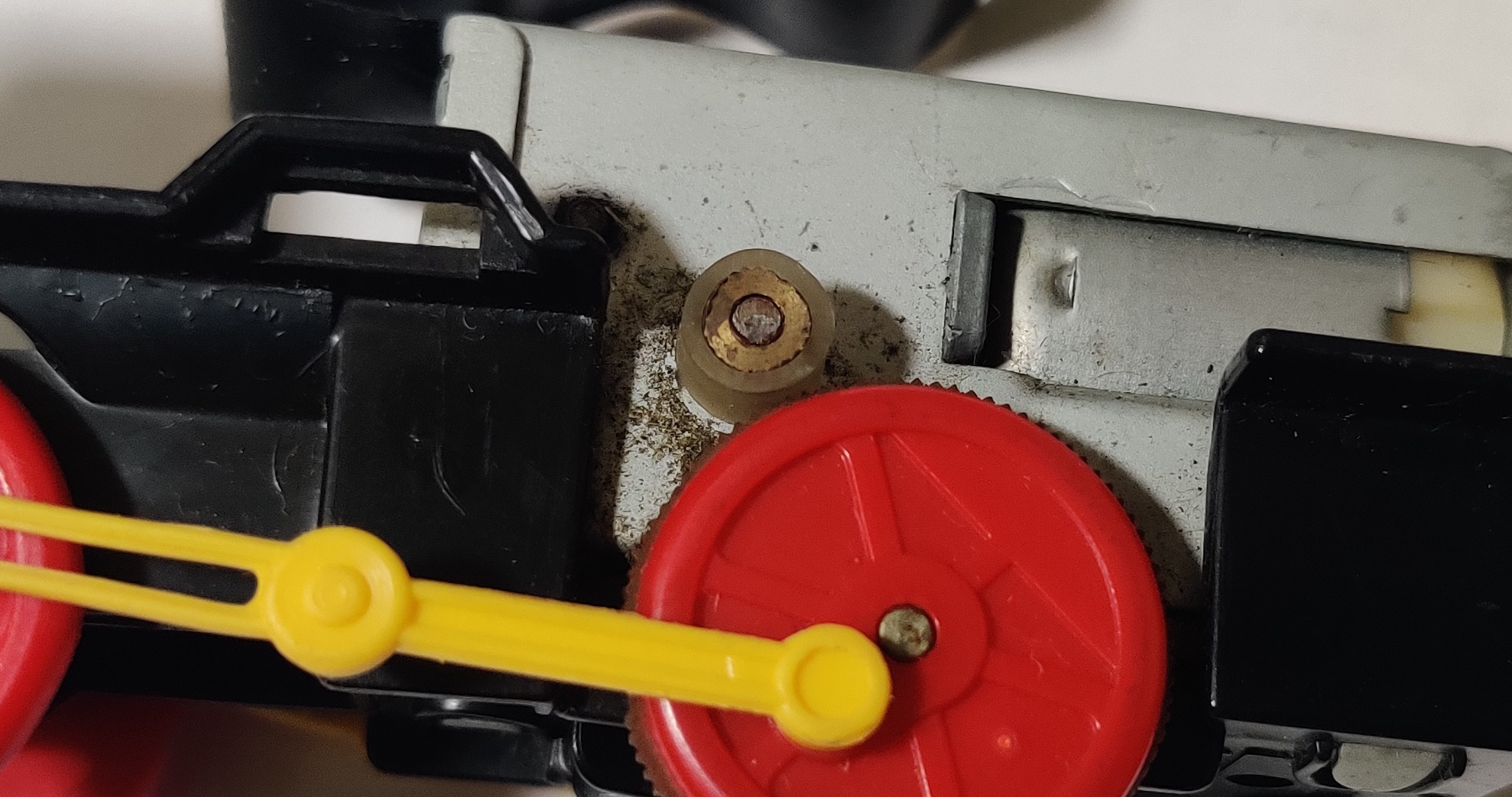
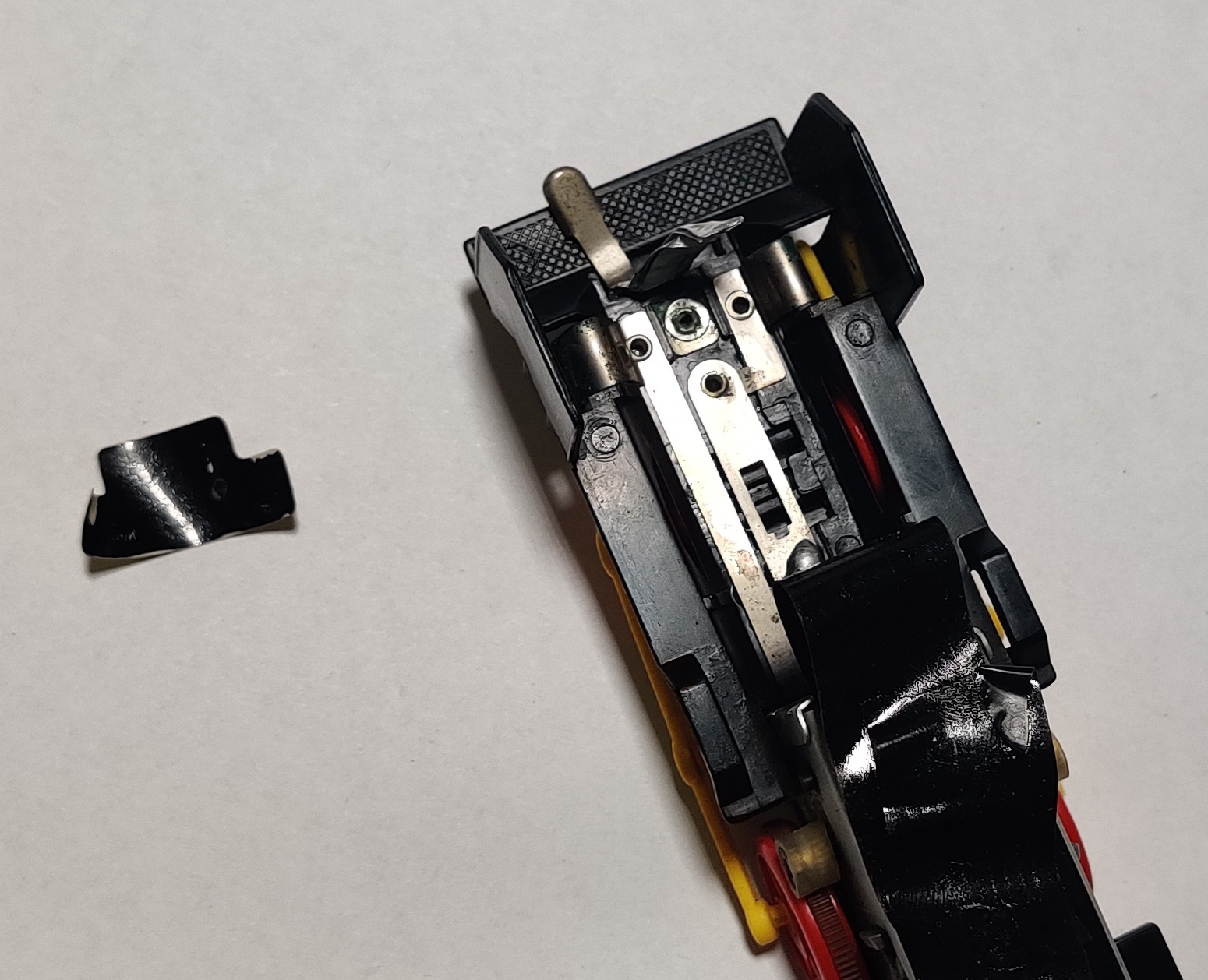
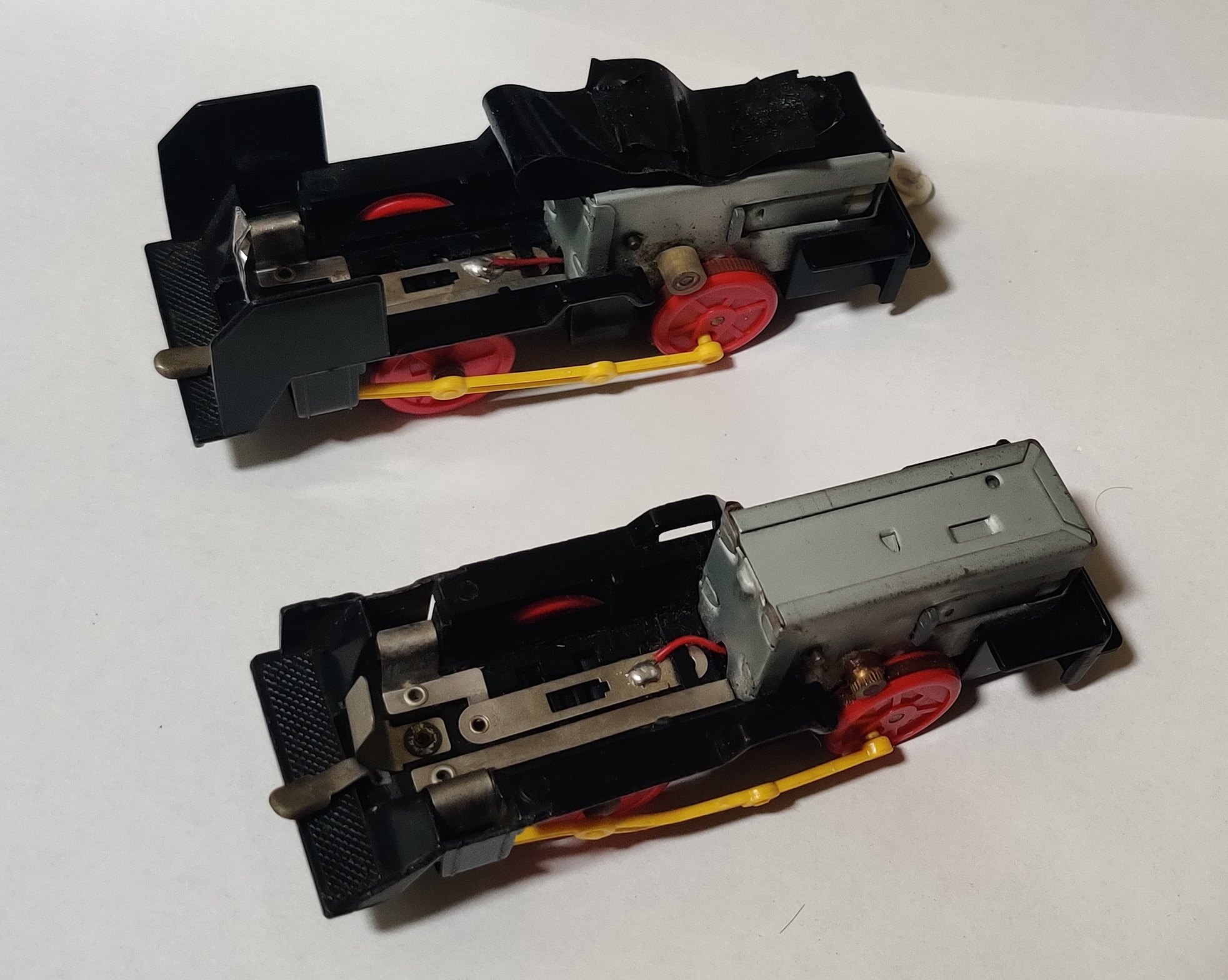
| Set name | 7 Types of Real Sound D-51 Sound Play
Set 7種類のリアルサウンド D-51音あそびセット |
Release period | 1992 |
| Train rating |
    
| Track rating |
     |
| Accessory rating |
     | Overall |
     |
| Notes: | Price | 7600 yen |